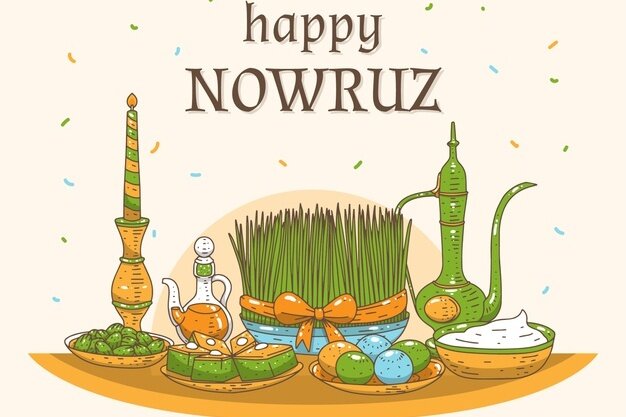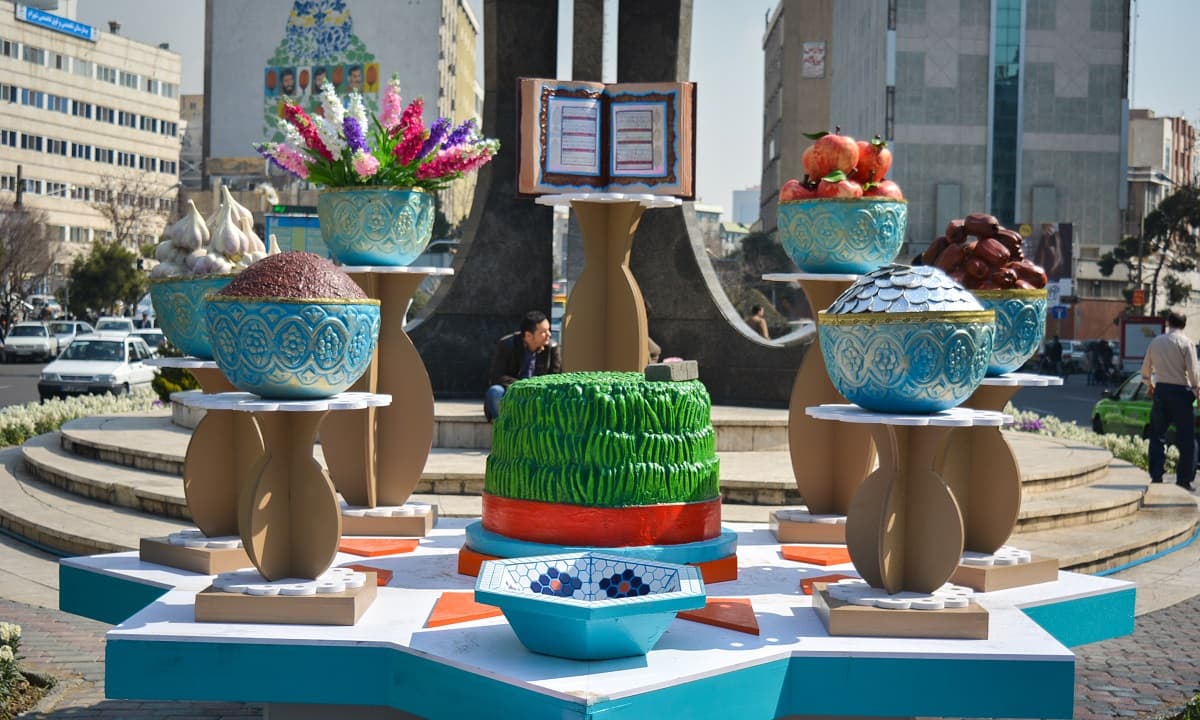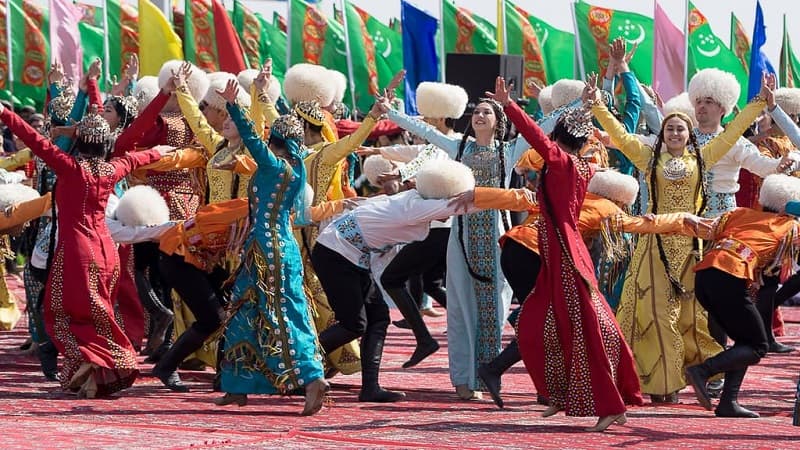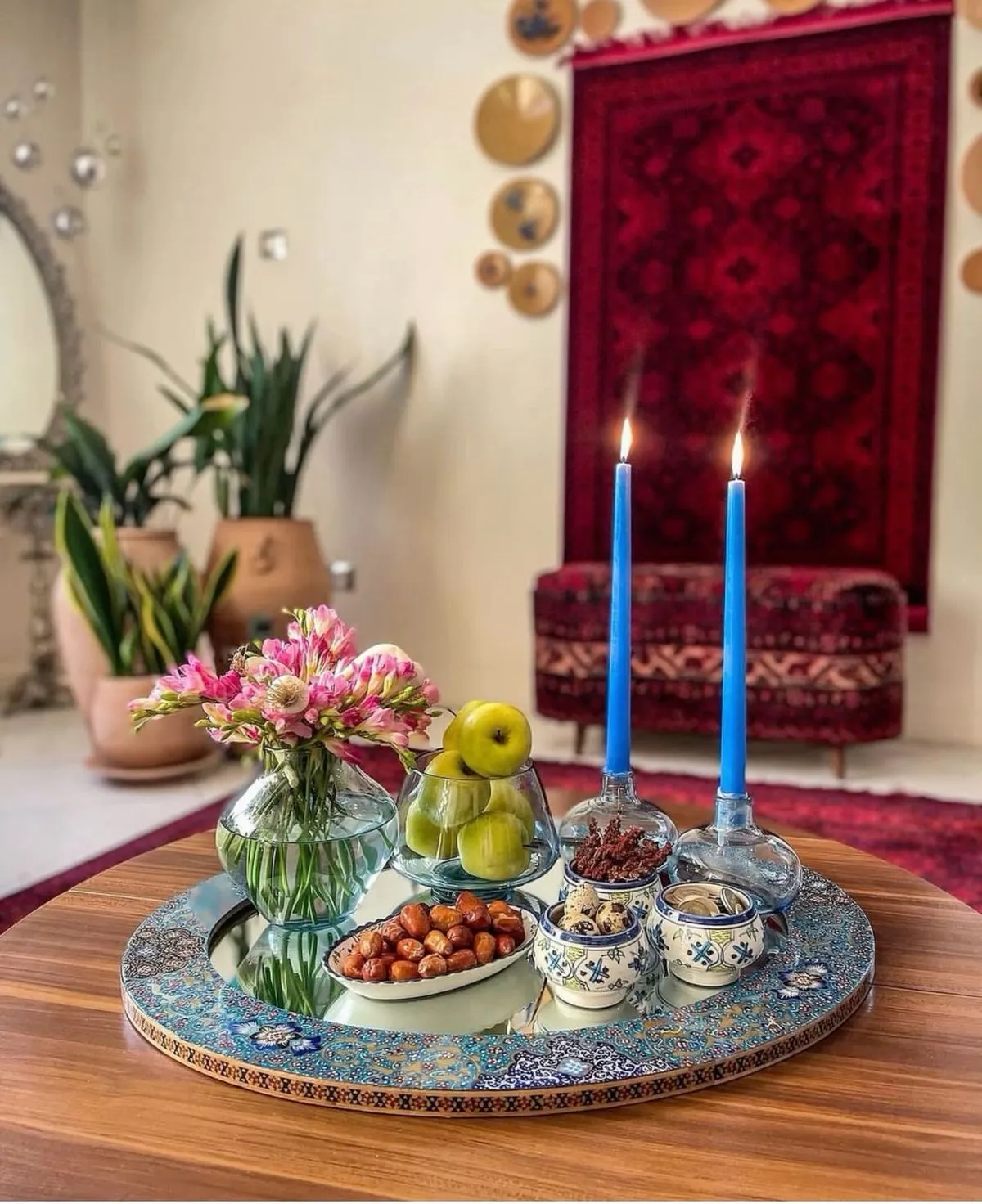The Linguistic Charm of Nowruz: Happy Nowruz in Farsi

- Persis Collection
- 4 February 2024
- nowruz
- 3 minutes
Nowruz, the Persian New Year, marks not only the commencement of the calendar year but also the blossoming of a rich cultural and linguistic heritage celebrated by millions worldwide. Understanding the linguistic nuances and the traditional greetings in Farsi can deepen our appreciation of this ancient festival, thereby enriching our global cultural mosaic. In this extensive exploration, we delve into the essence of Nowruz, its linguistic charm, and how the simple phrase “Happy Nowruz” in Farsi resonates with profound cultural significance.
Unveiling Nowruz
Nowruz, observed at the vernal equinox, is a universal symphony of new beginnings, symbolizing the rebirth of nature. Its roots, deeply entrenched in the heart of Persian culture, have branched out to various regions, gaining recognition and esteem worldwide. The United Nations has acknowledged Nowruz as an international festivity, highlighting its importance as a cultural treasure, promoting peace and solidarity.
The Language of Farsi Poetry and Prose
Farsi, or Persian, is a language of remarkable richness and literary legacy. Renowned for its eloquent poetry, profound prose, and articulate scripts, Farsi carries the essence of centuries-old wisdom and artistic expression. Understanding Farsi provides a key to unlocking the literary treasures and profound philosophical insights embedded in Persian culture.
Happy Nowruz in Farsi
The phrase “Happy Nowruz” or “Nowruz Mobarak” in Farsi is not merely a seasonal greeting; it encapsulates good wishes, hopes for prosperity, and the joy of renewal. It’s a phrase that resonates with emotional depth, connecting individuals to their roots, traditions, and the universal cycle of life and nature.
Cultural Significance of Nowruz Greetings
The exchange of Nowruz greetings is a practice rich in cultural significance, symbolizing unity, respect, and the shared joy of the season. It’s a moment when differences are set aside, and people come together to celebrate the essence of life, and the continuity of traditions passed down through generations.
Traditional Celebrations
Nowruz celebrations are a splendid tapestry of customs, colours, and linguistic expressions. The Haft-Seen table, with its seven symbolic items, each starting with the Farsi letter ‘S’, is a feast for the senses and the mind. The traditional poetry recitations, music, and dance further enrich the festive atmosphere, making Nowruz a true celebration of cultural and linguistic diversity.
Nowruz and the Global Community
While rooted in Persian culture, Nowruz has transcended geographical boundaries, fostering a sense of global kinship. Its recognition by the United Nations and its celebration in diverse countries underscore its universal appeal and its role in promoting cultural understanding and global harmony.
Preserving the Linguistic Heritage
In a world of rapid globalization, preserving the linguistic and cultural essence of Nowruz is crucial. Initiatives to promote Farsi language learning and cultural exchange programs can play a pivotal role in ensuring that the rich traditions and linguistic charms of Nowruz continue to thrive and inspire future generations.
Embracing the Linguistic Charm of Nowruz
Nowruz is not just a time marker; it’s a cultural phenomenon, a linguistic journey, and a universal celebration of life’s perpetual renewal. The phrase “Happy Nowruz” in Farsi is a bridge connecting us to the rich Persian heritage, a heritage that contributes significantly to the cultural and linguistic diversity of our global tapestry. As we embrace the linguistic charm of Nowruz, we partake in a tradition that cherishes the past, celebrates the present, and looks forward with optimism to the future.
In our quest for cultural understanding and global harmony, let us continue to explore and appreciate the profound depths of linguistic and cultural celebrations like Nowruz. By doing so, we not only honour a rich cultural heritage but also contribute to a world where diversity is celebrated, traditions are preserved, and unity is fostered through the universal language of respect and celebration.









Comments